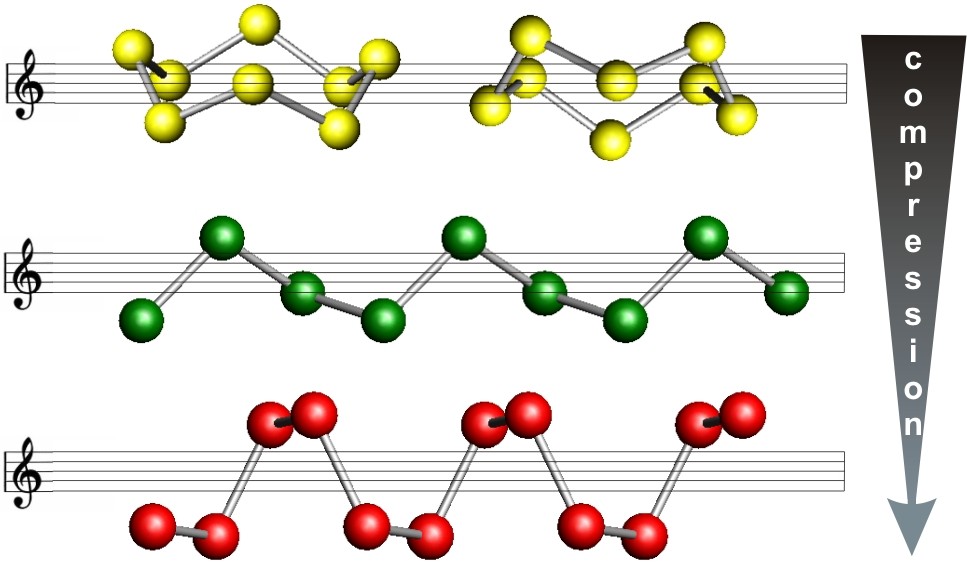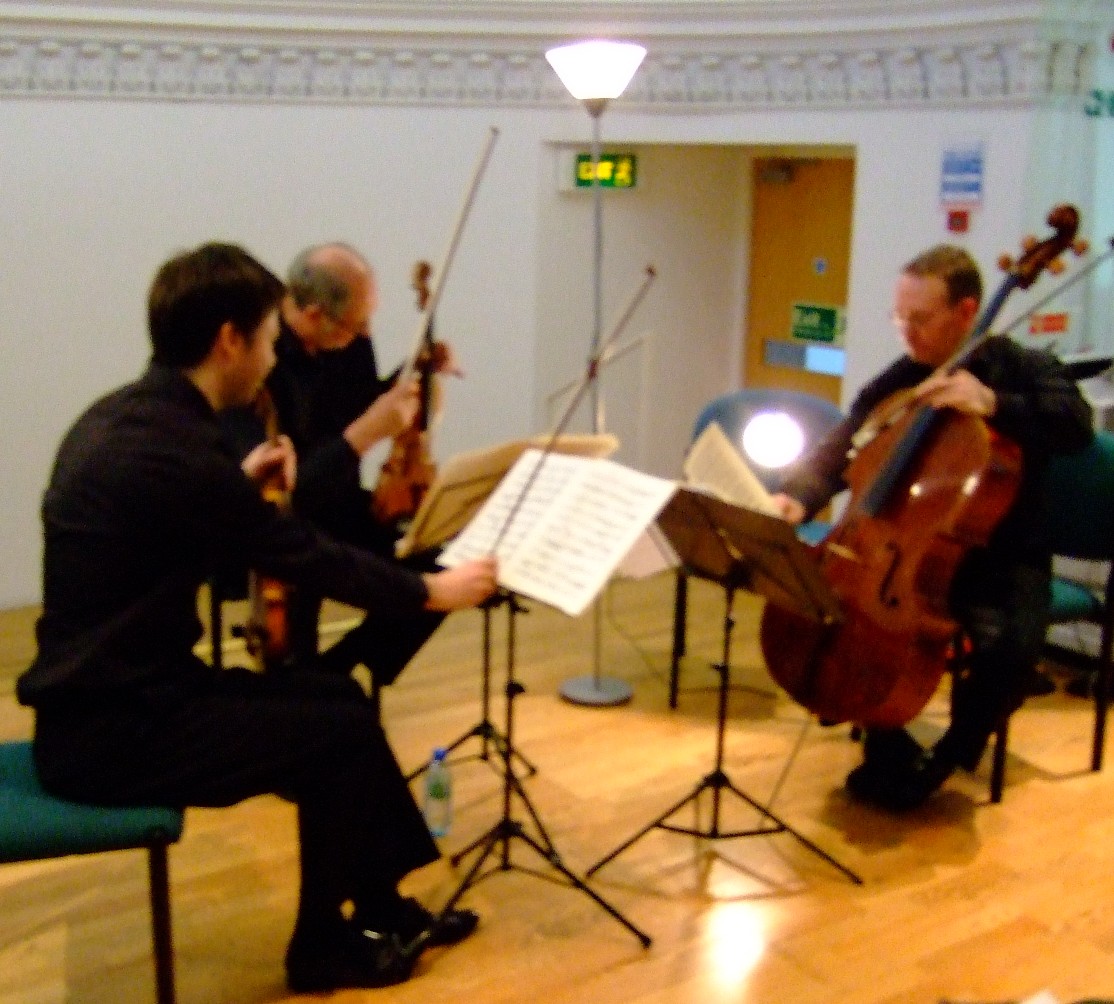Do you like live music? Do you go to concerts occasionally or maybe even regularly? I certainly do, as often as I can! With the passion for listening (and playing) live music nurtured in me by my mother since my childhood, I would take every opportunity to go to a concert to listen to live music.
Usually though you won’t expect to listen to a piece of music composed about the results of a scientific study! I normally would not either. But today I attended a premier of such piece of music. Moreover the first movement of this string trio was inspired by and composed about the results of my research.
…….
I started studying high-pressure behaviour of sulphur, and in particular how its molecular and crystal structure changes with pressure, about 7.5 years ago when I was a research fellow at the famous Geophysical Laboratory in the United States. Already then I got very excited about the first results. I would share it with my colleagues, spitting from excitement, how beautifully the ring molecules re-arrange themselves under pressure into denser spiral structures.
I’ve continued my studies of this element under pressure together with my colleagues after I moved to the University of Edinburgh about 5 years ago and where I am now a Royal Society Research Fellow.
I by no means “held a monopoly” on studying sulphur. Publications on high-pressure behaviour of sulphur from three other world-leading research groups appeared almost simultaneously in 2004-2005 in various high-profile journals.
This year though, it happened that it was me who was asked if I would be willing to spend some time talking about the results of my studies with a composer in residence, who will be then putting it into a piece of music. I immediately jumped on this opportunity and loved every minute of it.
The whole experience was so much in alignment with my intention that I set for myself in the year 2010.
My vision was to become an innovator in education exploring various forms of communicating knowledge. Passionate about non-traditional approaches in parenting and learning (I practice radical unschooling in raising our children together with my husband) and inspired by the TED talks of Sir Ken Robinson about innovative approaches in education, I was ready to contribute to this ongoing revolution of the existing education system.
I just did not know how… I could not imagine where to start. With the guidance of my mentors Christine Kane and Sam Pringle I have started with setting an intention. I’ve set an intention for finding my true passion and for becoming an innovator in education/science communication.
I started with paying attention to the new opportunities and eliminating anything not in alignment with my intention. I described the whole process in my guest post on 2010 Word of the Year: Passion in Christine Kane’s blog.
Opportunities started to appear. My research has been featured on the new science teaching resource of the National Academy of Science of the UK. Then the work with the composer in residence. I have now been invited to contribute some scientific aspects to a contemporary art exhibition that aims to present science to wide audiences “who are more comfortable in arts & humanities”.
These are all such rich and diverse opportunities for me to explore various media for science communication and teaching. I would not have thought of any of this by myself.
And this is what my mentor Christine Kane calls “letting go of the HOW”. As long as you keep the WHAT in your vision, you don’t need to worry about or know the HOW. It will happen one way or another.
(By holding the intention for finding my passion in 2010, I did find my passion for mentoring and even started my own business based on it).
Tonight at the Music at Extreme Conditions Concert held at the e-Science Institute in Edinburgh a string trio “In Extremis” was performed by the musicians from the EdinburghQuartet that was composed by a Scottish composer Julian Wagstaff and partly inspired by my communication of the research I do.
I felt like being in what Ken Robinson calls in his book The Element “a tribe”. I say a sentence and people understand, a melody is played and it resonates within me.
The whole process was a blend of passions and it produced a beautiful, engaging and powerful creation!
I am writing this post right after coming from the concert still vibrating from the live music performed tonight. And I intend this post to be an inspiration to you, MY READER, to pursue your dream, not matter how big and no matter how scared you are. And even if you don’t know HOW it will come true. 😉
Start with … setting an intention!…


Oh! I found one good blog after a long time.
Nice one.
Thanks so much for stopping by. I am so glad you like it!